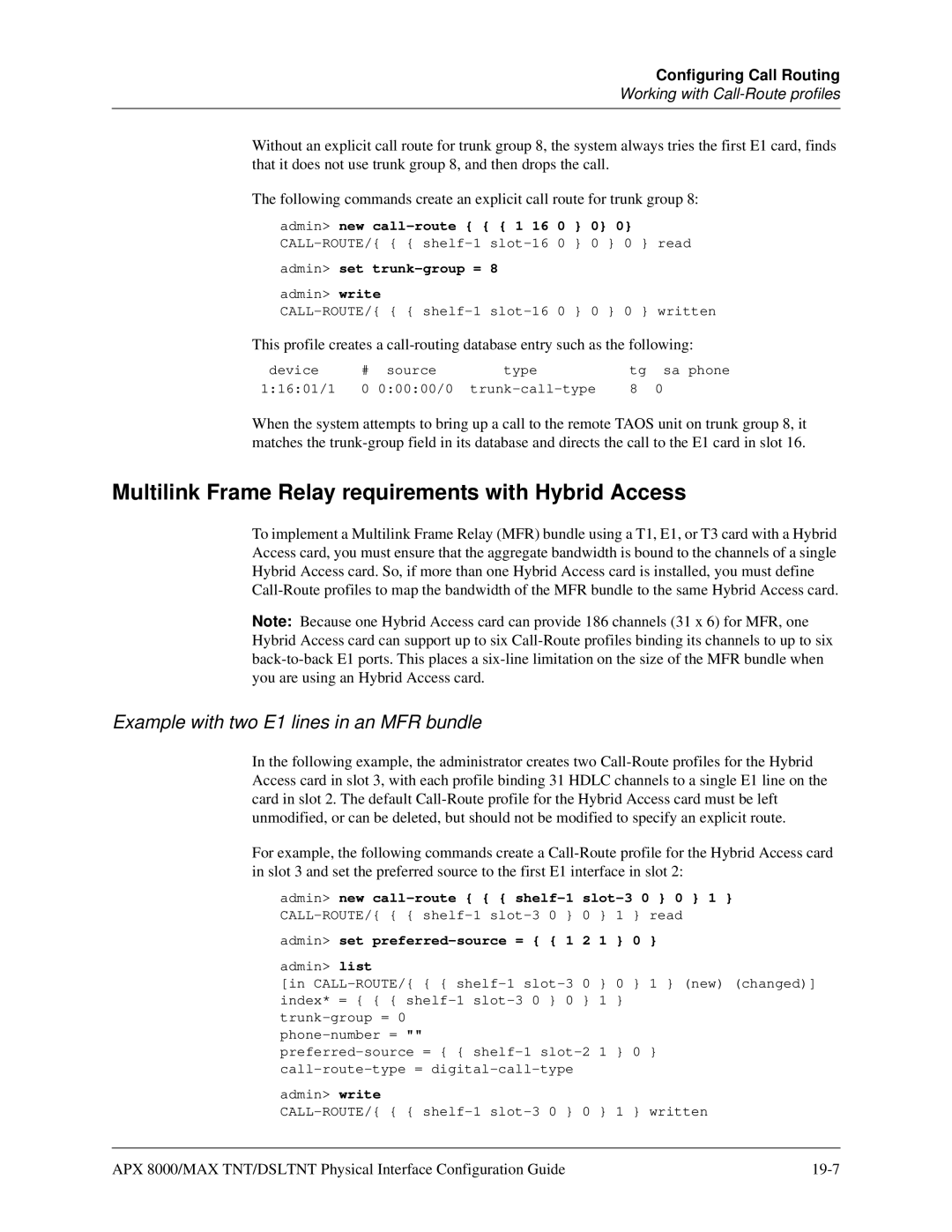
Configuring Call Routing
Working with Call-Route profiles
Without an explicit call route for trunk group 8, the system always tries the first E1 card, finds that it does not use trunk group 8, and then drops the call.
The following commands create an explicit call route for trunk group 8:
admin> new
admin> set
admin> write
This profile creates a
device | # | source | type | tg | sa phone |
1:16:01/1 | 0 | 0:00:00/0 | 8 | 0 |
When the system attempts to bring up a call to the remote TAOS unit on trunk group 8, it matches the
Multilink Frame Relay requirements with Hybrid Access
To implement a Multilink Frame Relay (MFR) bundle using a T1, E1, or T3 card with a Hybrid Access card, you must ensure that the aggregate bandwidth is bound to the channels of a single Hybrid Access card. So, if more than one Hybrid Access card is installed, you must define
Note: Because one Hybrid Access card can provide 186 channels (31 x 6) for MFR, one Hybrid Access card can support up to six
Example with two E1 lines in an MFR bundle
In the following example, the administrator creates two
For example, the following commands create a
admin> new
admin> set preferred-source = { { 1 2 1 } 0 }
admin> list
[in
admin> write
APX 8000/MAX TNT/DSLTNT Physical Interface Configuration Guide |
